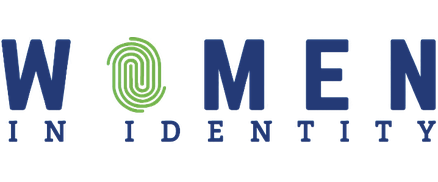
2 years ago and many months before Women In Identity burst into life, I wrote this blog about the plight of Rohingya children in Bangladesh’s refugee camps. Listening to the testimony of Aung San Suu Kyi in the Hague today was a depressing and gut-wrenching reminder of how quickly politics can corrupt. Or maybe she has a strategic plan and denying this genocide is simply a means to a far more humanitarian end. But I doubt it. And while commentators, politicians and UN judges carry on debating, an Identity-less future continues to loom for the babies of Rohingya Muslims.
[Photo - Senowara delivered her newborn son in Moynarghona Camp just 2 hours after crossing the border. Photo by Mahmud Rahman for CRS/Caritas Bangladesh.]
January 2018:
There can be few people who haven’t noticed the news reports about the plight of Rohingya Muslims fleeing Myanmar only to settle in camps in a form of ‘no man’s land’ on the Bangladesh border. They are just one group among the many millions of refugees and displaced persons who have been caught up in civil and military conflicts across the globe. Over 650,000 Rohingya Muslims have been forced into this stateless existence in the past year and the number continues to grow. But what really grabbed my attention was the Save The Children report that highlights that nearly 50.000 babies will be born in the camps in the year ahead. To quote one TV report, “none of them will be afforded the dignity of an officially recognised identity.”
With no formal record of their birth, they simply don’t exist as far as any government is concerned. And in the years ahead, this will lead to exclusion from education, healthcare or travel (including any potential migration back into Myanmar.) And, as adults, it will limit access to any form of banking system, government services and even the right to vote. These ‘ghost children’ aren’t just hidden from society – they are actively excluded. The issue of social and economic exclusion continues to challenge all of us who work in the identity sector. The World Bank through its ID4D initiative is collaborating with some of the world’s tech and payments giants as well as humanitarian agencies like UNHCR. Their goal is to have all citizens covered by inclusive, robust identification systems aimed at “providing a legal, recognised identity for all by 2030, including birth registration.
But it’s not just about refugees and the displaced. Exclusion is also a very real problem in developed countries where large numbers of economic migrants, citizens of ethnic minorities and even students can struggle to access new innovations and products. public services and benefits.
At the heart of the issue in the UK lies a reliance on traditional data and processes that were designed for a time long gone – one where documentation and your credit status were still king. Even in today’s (relatively) sophisticated UK banking sector, an application for a mortgage will still require paper copies of payslips, bank statements and other such quaint memorabilia (“No, I’m sorry Madam; we can’t accept a screenshot from your online banking app …!!”)
The world has moved on. Identity can no longer be just about documentation. If we are going to create great products and services that can be genuinely accessed by citizens of all nationalities – and none – the way we create and verify identity must be fit for the 21st – and indeed the 22nd – century.
But there is no ‘silver bullet’:
- We need data from a wide variety of sources to be easily collected – with consent – in a way that is relevant to the local culture and norms
- We need to collect only data that is needed for the individual use case
- We need biometric data such as iris scans and cardio rhythms (e.g. those being developed by B-Secur) to come mainstream – and not just for users of the latest iPhone
- We need newer forms of identity data such as mobile phone and social media usage to connect seamlessly to other, more traditional forms, including documentation
- And we need to innovate the processes in collaboration with local people on the ground – not simply within the confines of tech communities in Silicon Valley, Bangalore, Taiwan or Barcelona!
The data and technology are already out there. In many cases they are already in use to identify potential fraud and other crimes. There is no reason why data trends and patterns of behaviours can’t also be used to create positive digital identities that connect back to identify the ‘real world’ human.
How this might actually be configured – and in a secure and privacy-oriented manner – I’ll leave to the myriad technical wizards already working on it. All I know is that we owe it to the hundreds of thousands of babies being born in refugee camps to find a way of giving them an identity. An identity that will be recognised as they go through life – regardless of the geographical location, political or moral chaos in which they find themselves.
Author
About Karyn Bright

I’m an instinctive collaborator and I love bringing ideas to life through the natural creativity, individual strengths and vision of teams across our sector. Whether it’s a communications campaign to change perception or a product launch to drive revenue, I tend to look at how real people - in all their diverse individuality – will be affected. It’s why I love Women in Identity and its campaign for maximum inclusion. No matter how technologically advanced or sophisticated the solution, at the end of the day there is always a unique human at its heart.
